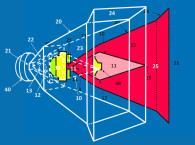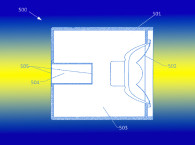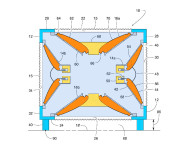
Acoustical Window Assembly for Vehicle
Patent Number: US 8,457,325
www.freepatentsonline.com
Inventors: Darin J. Snider (Holland, MI), Greg Rizzo (Bruce, MI), and Mats Olle Gustavsson (Helsingborg, Sweden)
Assignee: Magna International, Inc. (Aurora, CA)
Filed: Nov 6, 2007
US Classes: 381/86
Granted: June 4, 2013
Number of Claims: 20
Number of Drawings: 38
Abstract from Patent
An acoustical window assembly for a vehicle includes a window panel and mounting portions for mounting respective perimeter regions of the window panel to a vehicle structure. A first mounting portion substantially fixedly mounts a first perimeter region of the window panel relative to the vehicle structure, while a second mounting portion mounts a second perimeter region of the window panel to the vehicle structure and includes a flexible element to allow for movement of the second perimeter region of the window panel toward and away from the vehicle structure. An actuating assembly is positioned at an actuating region of the window panel and has a substantially rigid interface element that engages the actuating region of the window panel. The actuating assembly is operable to vibrate the window panel via vibration of the substantially rigid interface element relative to the vehicle structure.
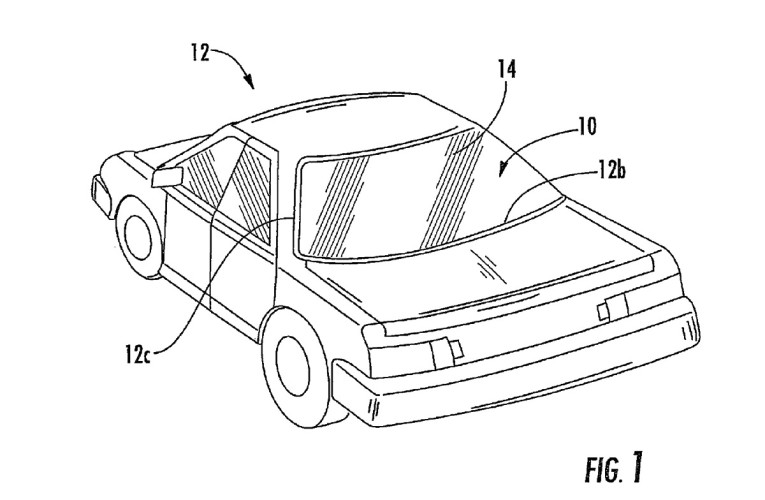
Key Claims
1. A window assembly for a vehicle, said window assembly comprising: a window panel, said window panel having a first perimeter region and a second perimeter region, said window panel having an innermost surface and an outermost surface, said innermost surface facing a cabin of the vehicle and said outermost surface exposed at the exterior of the vehicle when said window panel is mounted to a vehicle structure; a first mounting portion for mounting said first perimeter region of said window panel to the vehicle structure, said first mounting portion substantially fixedly mounting said first perimeter region of said window panel relative to the vehicle structure; a second mounting portion for mounting said second perimeter region of said window panel to the vehicle structure, said second mounting portion including a flexible element to allow for movement of said second perimeter region of said window panel toward and away from the vehicle structure, wherein said flexible element comprises at least one elongated generally U-shaped flexible element attached at said innermost surface and disposed between said innermost surface of said window panel and the vehicle structure; and an actuating assembly, said actuating assembly being positioned at an actuating region of said window panel generally at or proximate said second perimeter region, said actuating assembly having a substantially rigid interface element engaging said actuating region of said window panel, said actuating assembly being operable to vibrate said window panel via vibration of said substantially rigid interface element relative to the vehicle structure.
2. The window assembly of claim 1, wherein said vibration of said window panel generates audible sounds when said actuating assembly is operated.
3. The window assembly of claim 2, wherein said window panel is vibrated at a frequency between about 20 Hz and 200 Hz when said actuating assembly is operated.
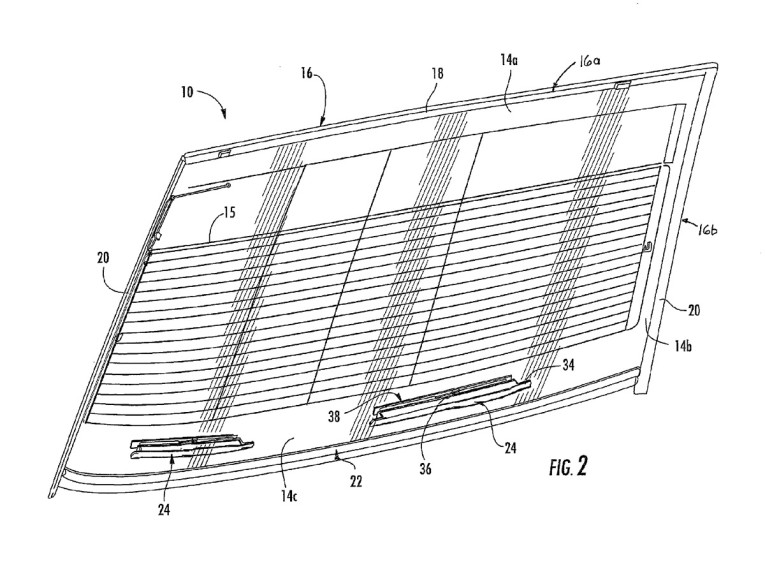
Home Theater
Patent Number: US 8,340,327
www.freepatentsonline.com
Inventors: Darin J. Snider (Holland, MI) and Gregory D. Rizzo (Bruce, MI)
Assignee: Magna International Inc. (Aurora, CA)
Filed: June 9, 2010
US Classes: 381/152
Granted: December 25, 2012
Number of Claims: 13
Number of Drawings: 51
Abstract From Patent
An acoustical window assembly for a vehicle includes a transparent glass window panel and mounting portions for mounting respective perimeter regions of the window panel to a vehicle structure. A first mounting portion substantially fixedly mounts a first perimeter region of the window panel relative to the vehicle structure, while a second mounting portion mounts a second perimeter region of the window panel to the vehicle structure and includes a flexible element to allow for movement of the second perimeter region of the window panel toward and away from the vehicle structure. An actuating assembly is positioned at an actuating region of the window panel and has a substantially rigid interface element that engages the actuating region of the window panel. The actuating assembly is operable to vibrate the window panel via vibration of the substantially rigid interface element relative to the vehicle structure.
Key Claims
1. A window assembly, comprising: at least one panel; at least one actuator operable for transferring vibration to said at least one panel; a back mount, said at least one actuator mounted to said back mount; a seal connected to said at least one panel; a frame, said seal connected to said frame such that said seal is disposed between said frame and said at least one panel, said seal operable for deflecting when said at least one actuator transfers vibration to said at least one panel, allowing said panel to vibrate; a window frame that is part of a building, said back mount mounted to said window frame such that said back mount is supported by said window frame; a mechanical exciter forming part of said actuator having a rigid upper side and a rigid lower side with plates extending between the upper side and the lower side, said actuator further including a piezoelectric stack connected to said plates of said mechanical exciter, wherein said plates of said mechanical exciter are angled outward away from said piezoelectric stack and amplify the stroke of said piezoelectric stack away from said at least one panel.
7. A window assembly operable for functioning as a speaker in a home audio speaker system: at least one glass panel; a plurality of actuators connected to said at least one glass panel; a back mount, each of said plurality of actuators mounted to said back mount; a seal operably connected to said at least one glass panel; a glass frame, said seal connected to said glass frame such that said seal is disposed between said glass frame and said at least one glass panel, said seal operable for deflecting when said plurality of actuators transfer vibration to said at least one glass panel, causing said at least one glass panel to vibrate; and a window frame formed as part of a wall of a dwelling, said back mount mounted to said window frame such that said at least one glass panel and said plurality of actuators are operable to be used as a speaker in a home audio system; wherein each of said plurality of actuators includes a mechanical exciter having a rigid upper side and a rigid lower side with plates extending between the upper side and the lower side, said actuator further including a piezoelectric stack connected to said plates of said mechanical exciter, wherein said plates of said mechanical exciter are angled outward away from said piezoelectric stack and amplify the stroke of the piezoelectric stack away from said window panel.
10. A method for implementing a window assembly to function as a speaker in a home audio system, comprising the steps of: providing at least one panel; providing a plurality of actuators connected to said at least one panel; providing a back mount, each of said plurality of actuators connected to said back mount; providing a seal connected to said at least one panel; providing a window frame that is part of a building, said back mount mounted to said window from such that said back mount is supported by said window frame, said seal is connected to and positioned between said glass frame and said back mount, allowing for said at least one panel to vibrate and providing a sealing function between said window frame and said back mount; transferring vibration to said at least one panel from said plurality of actuators, producing a desired sound; deflecting said seal as vibration is transferred from said plurality of actuators to said at least one panel; each one of said plurality of actuators including a mechanical exciter having a rigid upper side and rigid lower side with plates extending between the upper side and the lower side, each of said plurality of actuators include a piezoelectric stack connected to said plates of said mechanical exciter, wherein said plates of said mechanical exciter are angled outward of said piezoelectric stack and amplify the stroke of the piezoelectric stack away from said window panel.
Reviewer Comments
Disclosed in the two patents listed above, is a new type of subwoofer architecture. The first is intended for use in an automobile (US Patent 8,457,325) and the second, for use in a domestic listening room (US Patent 8,340,327).
In the May 2015 issue of Voice Coil, I wrote a review on a new subwoofer patent, US 8,804,991, by Zeljko Velican of Blueprint Acoustic, wherein the device was mounted in an outer baffle of the vehicle perimeter, such that it radiated the “rear-wave” of the woofer transducer into the outside-external environment. The patent and the review discussed the advantage of substantially eliminating the loudspeaker enclosure (the vehicle cabin becomes the dominant enclosure compliance) of greater efficiency and low frequency extension. The remaining need potentially being greater cubic volume displacement (Vd) achieved from either greater diaphragm surface area, or greater excursion capability, to realize high acoustic output at the increased potential for low frequency extension.
Now enter an even more innovative variation of the same theme. Darin Snider, a prolific inventor in the field of vehicle window assemblies, has applied his craft to developing a low- frequency transducer, with a suspended glass window as the transducer diaphragm.
The primary embodiment disclosed is a rear automobile window with a pivotal hinge assembly along the top edge of the window and compliant suspension members along the sides and bottom edges of the window, with the concept being that the largest excursions are at the window bottom and the top edge of the window is a fixed pivot for the visually transparent “acoustic diaphragm.” In most of the embodiments, the lower edge of the window has multiple piezo-electric actuators providing the motivation of the vibratile diaphragm.
Using a current mid-sized sedan as a reference, the rear window has a surface area equal to the diaphragm surface area (Sd) of approximately eighteen 12” woofers (and the moving mass of more than the moving mass of a hundred 12” woofers)! Considering that the moving system is pivoted at one edge, the effective XMAX is approximately 50% of the actual XMAX at the driven edge of the window.
Most of the patent is devoted to the many practical aspects of mounting fixtures and materials to realize the device in a manner that would be practical to actually mount in a production automobile. (Motor Trend and several media sources have stated that in late 2015, there will be examples in production vehicles.)
Historically, piezo elements have been capable of high force, but very limited excursion capability, compared to a dynamic transducer, particularly one that must operate at low frequencies. There have been many approaches to stacking elements and the implementation of mechanical levers to increase excursion in exchange for force relative to what a direct coupled, single element can provide.
The piezoelectric actuating devices disclosed for use in the invention involves a plurality of stacked plates, or discs, that function to generate 40 to 100 microns of total displacement from the “raw” elements. When activated with the excursion transforming ability of a unique connecting element, called an “exciter,” (a scissor type, mechanical transformer that converts the very high force horizontal piezo expansion and contraction, to a larger, vertical excursion) the excursion at the end of the mechanical transformer, connected to the window, is leveraged such that the excursion is expanded up to as much as 0.5 mm, which is an impressive displacement for a piezoelectric element.
It is claimed in the patent that the present invention, when implemented and tested on a vehicle window, has been found to be capable of achieving an sound pressure level of about 110 dB over a range of 30 to 120 Hz.
There are no graphic displays of frequency response or other performance metrics, but for those interested in learning more about what the system can actually achieve—at least in a proof of concept, prototype form—one can view a PDF of the graduate thesis of Igor Samardzic of University of Windsor, Ontario, Canada at http://scholar.uwindsor.ca/cgi/viewcontent.cgi?article=1206&context=etd.
Samardzic apparently worked in the auto industry for a few years with the group developing the concept. He built prototypes and, as revealed in his thesis, did an extensive exploration of the performance outcome compared to a reference conventional 10” subwoofer, including measurements and subjective testing, with listening panels.
The second of the two patents, listed at the beginning of this review, is essentially the same concept, adapted to one or more windows of a domestic listening room. In an automobile the cabin gain is such that the ratio of external acoustic output vs. internal acoustic output at the lowest frequencies is quite small, so as to not to bother those outside the vehicle to a significant degree. In a larger domestic listening environment, it is expected that the external acoustic levels are going to be more comparable with the internal sound pressure levels, and that will most likely be much less acceptable. So one might question the practicality of the home application of the invention, even though the potential of the interior performance may be quite good.
Other uses for the configuration include that of low-frequency noise cancellation in vehicle interiors, for which the inventors have filed an additional international patent, WO2012/135642, “Active Buffeting Control in an Automobile.”
Overall, the concept is interesting and for the automotive application, if actually practical for assembly in production vehicles, it would appear to have very good potential, when fully optimized. VC
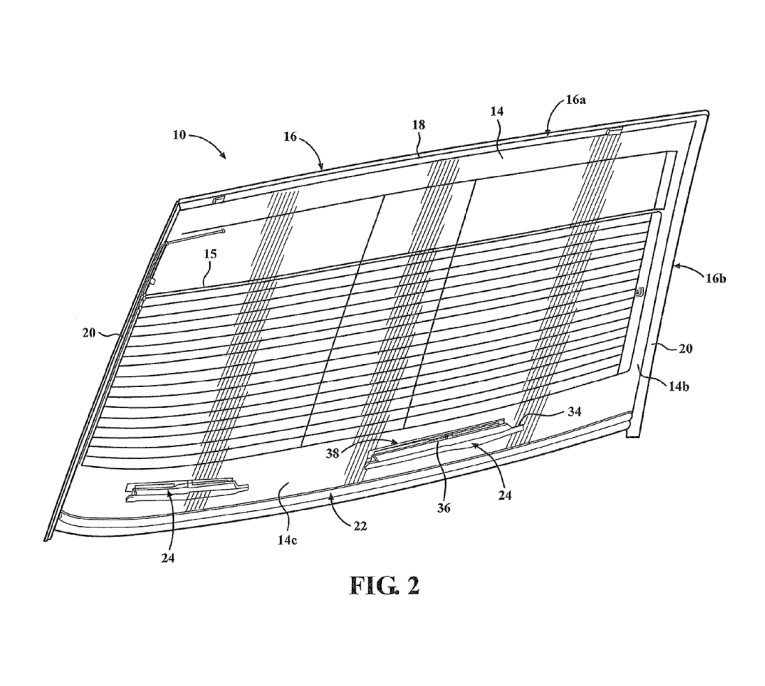
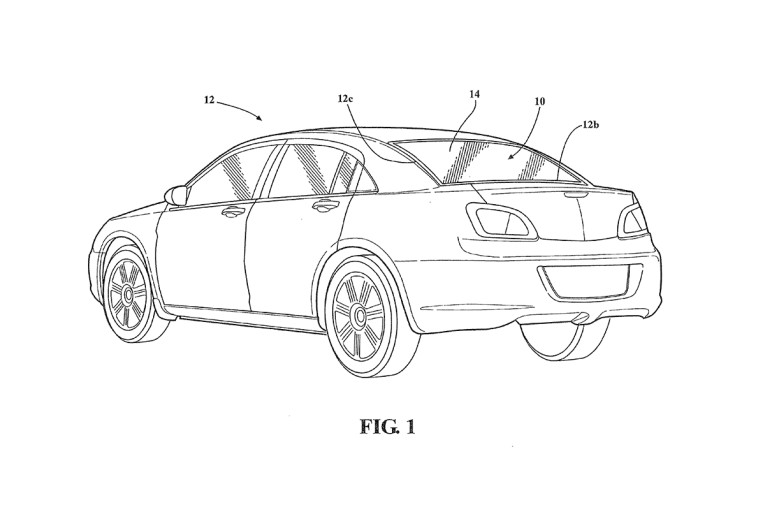
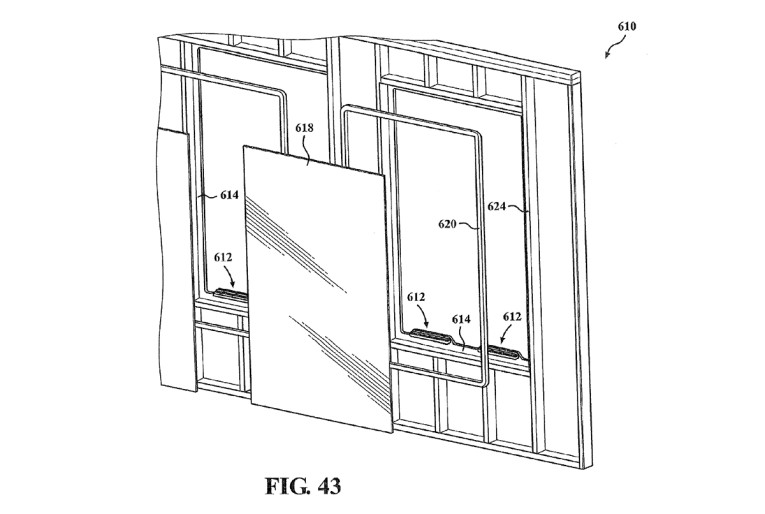
This article was originally published in Voice Coil, October 2015.




